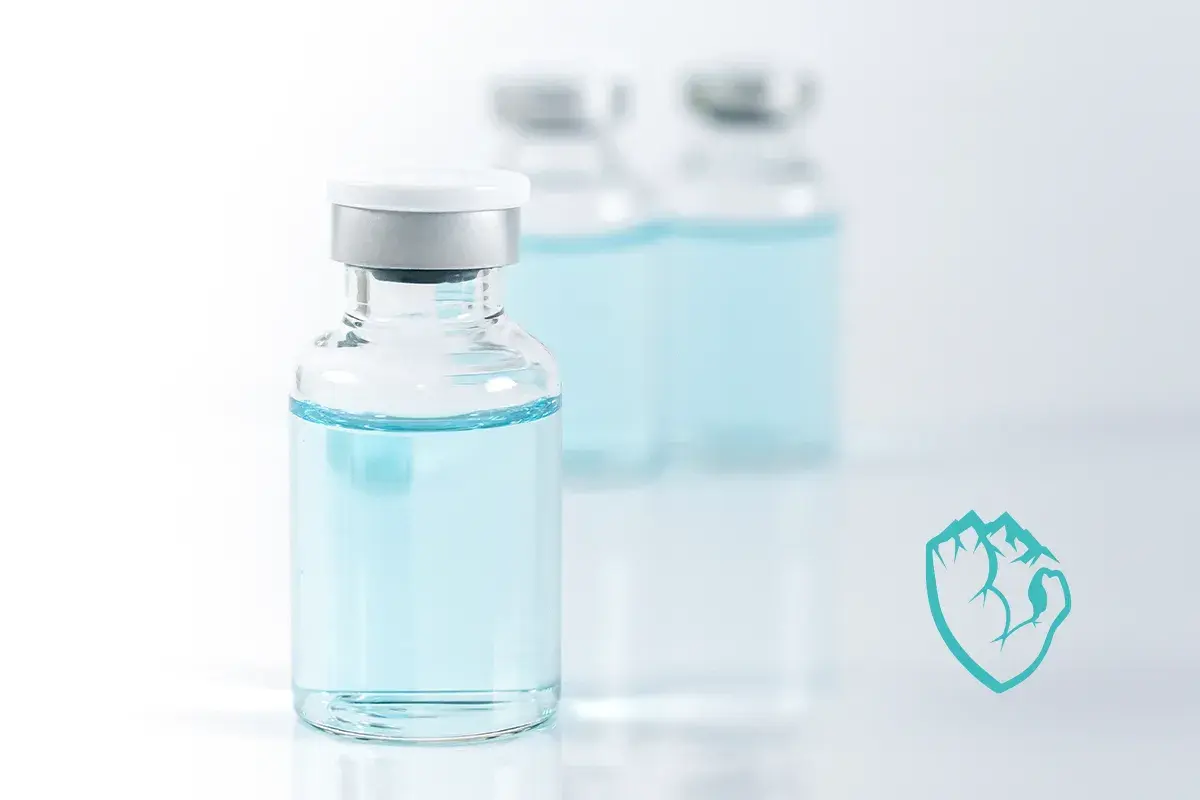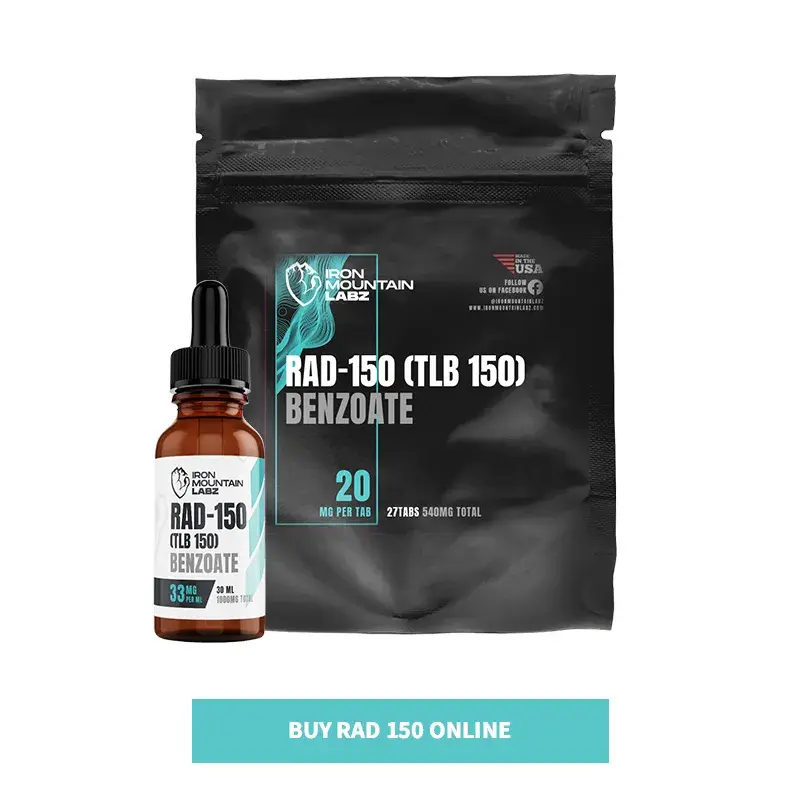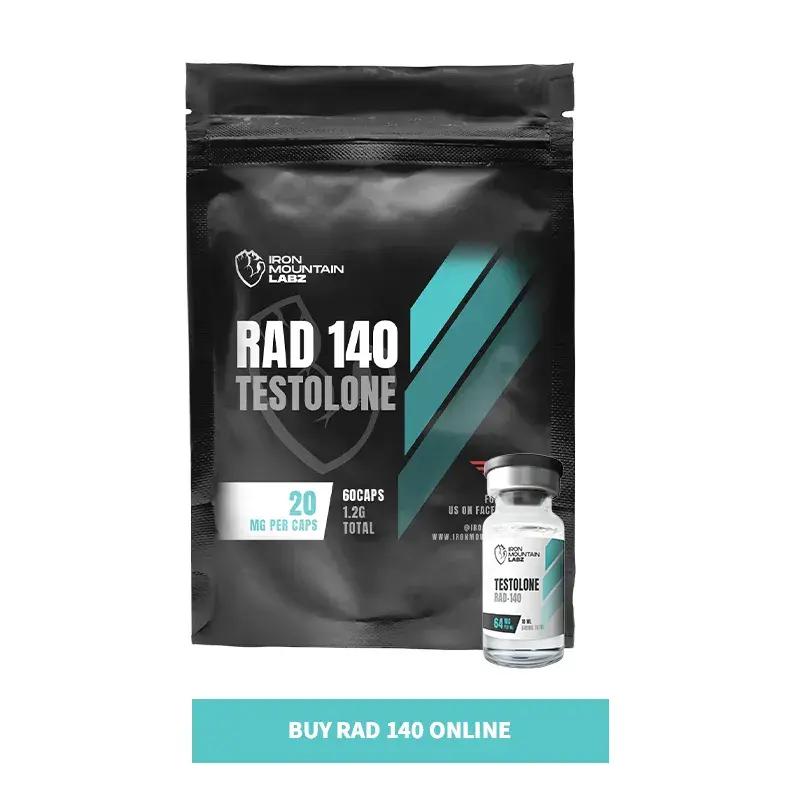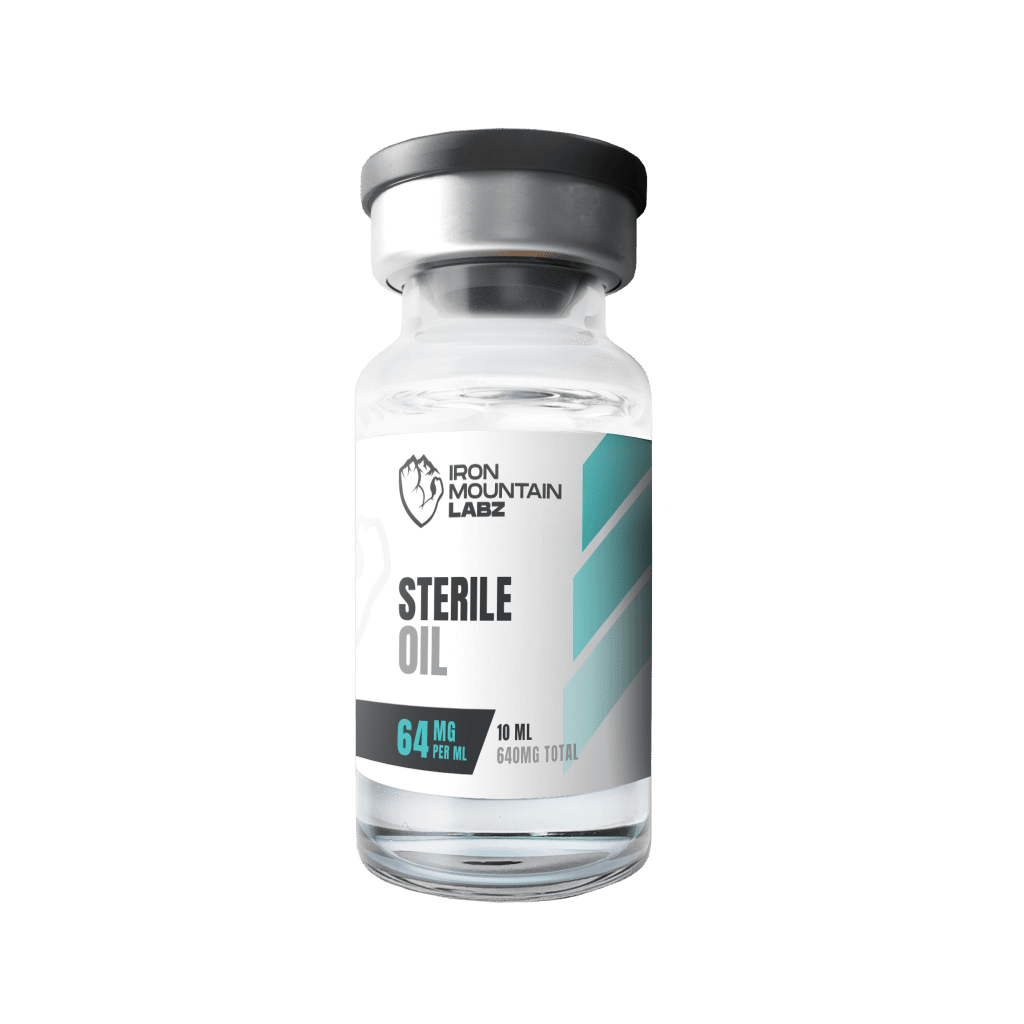
RAD 140 and RAD 150 are Selective Androgen Receptor Modulators (SARMs). These compounds are of great value in scientific research due to their anabolic activity and influence on pathways linked to muscle and bone strength.
In this blog, we will compare RAD 140 and RAD 150 and focus on their structural differences, mechanism of action, and potential impact based on current findings.
RAD 150 is referred to as an updated form of RAD 140. The main difference between the two compounds is that RAD 150 has an added chemical group through a process called esterification. This change may extend the half-life of the compound and improve its stability in research settings.
Like RAD 140, RAD 150 shows anabolic activity in research models, which means it may support muscle growth and bone strength. Studies suggest it may influence processes related to tissue development, bone density, and overall metabolic function in test subjects. see real SARMs before and after results.
RAD 150 is a benzoate ester derivative of RAD 140. Its molecular formula is C₂₇H₂₀ClN₅O₃, and it has a molecular weight of about 497.9 g/mol. A benzoate ester is created by linking benzoic acid to the core RAD 140 molecule, which increases its stability and may extend its half-life.
RAD 150 works by selectively binding to androgen receptors in skeletal and muscle tissues in test models. This may activate processes that may support the development of muscle tissue and improve bone strength in test models.
The potential benefits of RAD 150, based on preclinical findings, include the following.

The risks associated with RAD 150 usage in the research model include the following.
The half-life of RAD-150 is estimated to be between 48 and 60 hours.
RAD 150 is not approved by the FDA for medical use and is only allowed for research purposes. So, selling SARMs as a supplement or calling them a “legal steroid” is misleading and goes against current regulations.
Iron Mountain Labz is the best place for purchasing RAD-150 due to its strong focus on quality and reliability. All products come with a Certificate of Analysis (COA). Their offerings are lab-tested for contaminants. Iron Mountain Labz is also known for fast delivery and excellent customer service. This makes it a trusted online source for RAD-150 in research applications.
RAD 140 (Testolone) is a type of SARM that is studied for its ability to support lean muscle and bone growth in test models. Scientists are interested in how it works with certain receptors linked to muscle and bone health. It’s also available in research-grade form, such as RAD 140 Testolone Capsules.
RAD 140 may act like anabolic steroids in some ways, but it is being explored as a possible option with fewer side effects.
RAD 140 is a non-steroidal SARM with the molecular formula C₀₂₀H₁₆ClN₅O₂ and molecular weight of about 393.8 g/mol.
RAD 140 binds selectively to androgen receptors in muscle and bone tissues. This compound sends signals that enable the test model to build more protein and make bones stronger.
The potential benefits of RAD 140 in experimental settings include the following.

RAD 140 may have the following side effects for test models.
Preclinical studies suggest a half-life of about 45 to 60 hours.
RAD 140 (Testolone) is not approved by the U.S. Food and Drug Administration and is officially categorized as an unapproved drug. The FDA has issued repeated warnings that RAD 140 and other SARMs are experimental chemicals, and they are only legal for sale and use in laboratory research.
Iron Mountain Labz also provides RAD-140 with the commitment to quality and transparency. Every product is backed by a COA and undergoes rigorous testing to ensure research-grade purity. Iron Mountain Labz offers prompt shipping and responsive customer support. This makes it one of the best places to buy RAD-140 for research purposes.
RAD 140 and RAD 150 share a similar chemical base and purpose in research, but they differ in structure, duration of action, and how they may perform in experimental settings.
Let’s figure out the similarities between RAD 150 and RAD 140.
The differences between RAD 150 and RAD 140 may include the following.
Researchers who are studying muscle, bone, or metabolism often choose RAD 140. It has a longer track record and shows consistent results in test models.
RAD 150 is a newer version of RAD 140. It was changed through esterification to have a longer half-life and stay more stable during testing. Early research suggests RAD 150 may offer longer-lasting effects, but it is a new compound, and there’s less data, which makes its results harder to predict.
So, the right choice depends on your research goal. RAD 140 is more trusted and consistent. RAD 150 may be useful for studies examining longer activity or newer compounds.
RAD 140 and RAD 150 are SARMs that activate androgen receptors in muscle and bone, but RAD 140 benefits from years of research. RAD 150’s added ester increases stability and may extend activity in research. However, research data on RAD 150 remains scarce.
At this stage, RAD 140 is considered the more reliable choice for studies focusing on muscle, bone, and metabolic effects. RAD 150 shows promise, especially for longer-term protocols, but its effects are less predictable due to limited research. Researchers interested in exploring more options can browse the full SARMs product category.
RAD 150 is not necessarily stronger, but it may stay active longer in test models because of its esterified structure. This could make its effects last longer, though both compounds show similar anabolic activity in research.
Yes, both compounds can be included in the same study if the research is designed to compare or evaluate their effects. It’s important that the study setup clearly defines dosages, timing, and outcomes.
Yes, both RAD 140 and RAD 150 can be detected in drug screenings, especially those used in sports. They are banned by the World Anti-Doping Agency (WADA) and may trigger positive results in anti-doping tests. Since SARMs are banned by WADA, researchers sometimes explore alternatives like Retatrutide Nasal Spray for metabolism-related studies.
While RAD 150 is believed to last longer due to esterification, researchers often review data on how long SARMs stay in the system to understand clearance rates more broadly.
No, RAD-150 does not directly increase testosterone levels. Instead, it mimics the effects of testosterone by binding to androgen receptors in muscle and bone tissues. This promotes anabolic activity without significantly affecting other physiological systems in research models.
No, RAD-150 is not a steroid. It is a selective androgen receptor modulator (SARM). This means it targets androgen receptors in muscle and bone to boost anabolic effects without affecting overall hormone levels like steroids. Read our guide on SARMs vs Steroids to learn the differences.
Different compounds can act on the same receptors but produce different results. SARMs and testosterone
Peptides are biomolecules that can lose their strength and structural integrity when stored under inappropriate

If you experience injection pain, consider purchasing sterile oil. It helps ease discomfort by thinning the compound, making injections smoother.